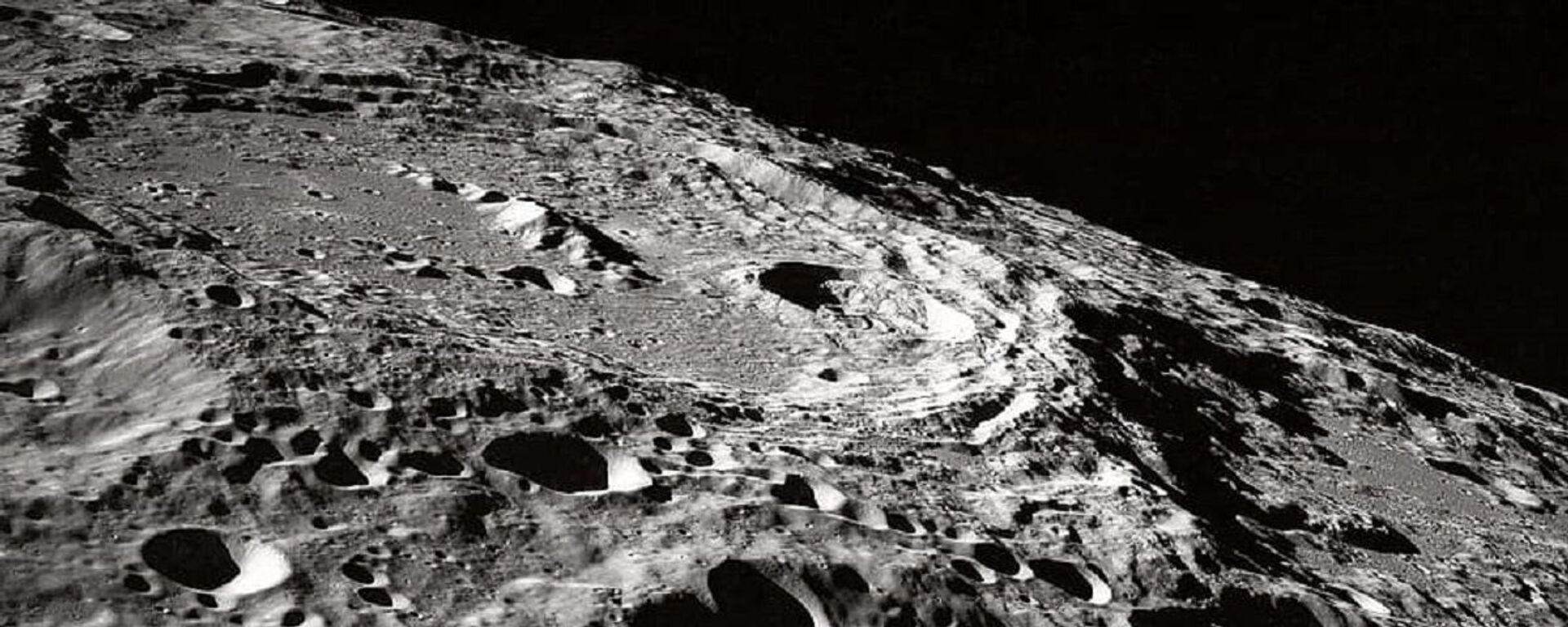https://sputnikglobe.com/20220918/volcanic-eruptions-on-the-moon-new-study-reveals-why-it-was-possible-1100930053.html
Volcanic Eruptions on the Moon? New Study Reveals Why it is Possible
Volcanic Eruptions on the Moon? New Study Reveals Why it is Possible
Sputnik International
In 2020, China's lunar capsule Chang'e 5 carrying samples of rock and debris from the Moon returned to Earth, adding significantly to scientists’ understanding... 18.09.2022, Sputnik International
2022-09-18T14:25+0000
2022-09-18T14:25+0000
2022-09-18T14:28+0000
science & tech
moon
china
study
samples
scientists
https://cdn1.img.sputnikglobe.com/img/107684/45/1076844500_0:111:1281:831_1920x0_80_0_0_45352e4d41bf0d06c54c5278547145a0.jpg
It seems that our planet is not the only place in the Milky Way where volcanic eruptions take place. A group of Chinese scientists have discovered what they say are traces of volcanic activity on the Moon.In a study published in the Journal of Geophysical Research, scientists explained that they found evidence of at least four layers of volcanic lava flows that flooded the landing region of China’s Chang'e-5 lunar probe, which wrapped up its mission in 2020.This was followed by the Chinese researchers working hard to explore samples of lunar soil that the Chang'e mission brought back to Earth – research that finally saw them announcing the discovery related to volcanic eruptions on the surface of Earth’s satellite.The scientists also suggested that Chang'e 5’s landing region was rich in heat-producing elements, including uranium, thorium and potassium, which researchers think added to the long-standing volcanic activities on the Moon.Du also argued that the research indicated that the eruption rate of the so-called mare basalts in the Chang'e-5 landing area increased considerably about 2 billion years ago. Mare basalts, which are formed by the partial melting of the lunar mantle, were for the first time brought to Earth from the Moon by the US Apollo 11 mission in 1969.
https://sputnikglobe.com/20220529/china-plans-to-send-robotic-mission-to-moons-permanently-shadowed-south-pole-craters-1095861056.html
china
Sputnik International
feedback@sputniknews.com
+74956456601
MIA „Rosiya Segodnya“
2022
Oleg Burunov
https://cdn1.img.sputnikglobe.com/img/07e4/09/0b/1080424846_0:0:2048:2048_100x100_80_0_0_3d7b461f8a98586fa3fe739930816aea.jpg
Oleg Burunov
https://cdn1.img.sputnikglobe.com/img/07e4/09/0b/1080424846_0:0:2048:2048_100x100_80_0_0_3d7b461f8a98586fa3fe739930816aea.jpg
News
en_EN
Sputnik International
feedback@sputniknews.com
+74956456601
MIA „Rosiya Segodnya“
Sputnik International
feedback@sputniknews.com
+74956456601
MIA „Rosiya Segodnya“
Oleg Burunov
https://cdn1.img.sputnikglobe.com/img/07e4/09/0b/1080424846_0:0:2048:2048_100x100_80_0_0_3d7b461f8a98586fa3fe739930816aea.jpg
science & tech, moon, china, study, samples, scientists
science & tech, moon, china, study, samples, scientists
Volcanic Eruptions on the Moon? New Study Reveals Why it is Possible
14:25 GMT 18.09.2022 (Updated: 14:28 GMT 18.09.2022) In 2020, China's lunar capsule Chang'e 5 carrying samples of rock and debris from the Moon returned to Earth, adding significantly to scientists’ understanding of what took place on the surface of Earth’s satellite a long time ago.
It seems that our planet is not the only place in the Milky Way where volcanic eruptions take place.
A group of Chinese scientists have discovered what they say are traces of volcanic activity on the Moon.
In a study published in the Journal of Geophysical Research, scientists explained that they found evidence of at least four layers of volcanic lava flows that flooded the landing region of China’s Chang'e-5 lunar probe, which wrapped up its mission in 2020.
This was followed by the Chinese researchers working hard to explore samples of lunar soil that the Chang'e mission brought back to Earth – research that finally saw them announcing the discovery related to volcanic eruptions on the surface of Earth’s satellite.
The scientists also suggested that Chang'e 5’s landing region was rich in heat-producing elements, including uranium, thorium and potassium, which researchers think added to the long-standing volcanic activities on the Moon.
Du Jun, who led the research, told the China Daily that, “The study of the thickness of basalt and its eruption rate in the landing area of Chang'e-5 will further improve the understanding of the lunar volcanic activity and internal thermal evolution history."
Du also argued that the research indicated that the eruption rate of the so-called mare basalts in the Chang'e-5 landing area increased considerably about 2 billion years ago. Mare basalts, which are formed by the partial melting of the lunar mantle, were for the first time brought to Earth from the Moon by the US Apollo 11 mission in 1969.
“These results are expected to provide new constraints for the numerical model that can explain the duration and scale of the volcanic activities on the Moon," the Chinese researcher said.





